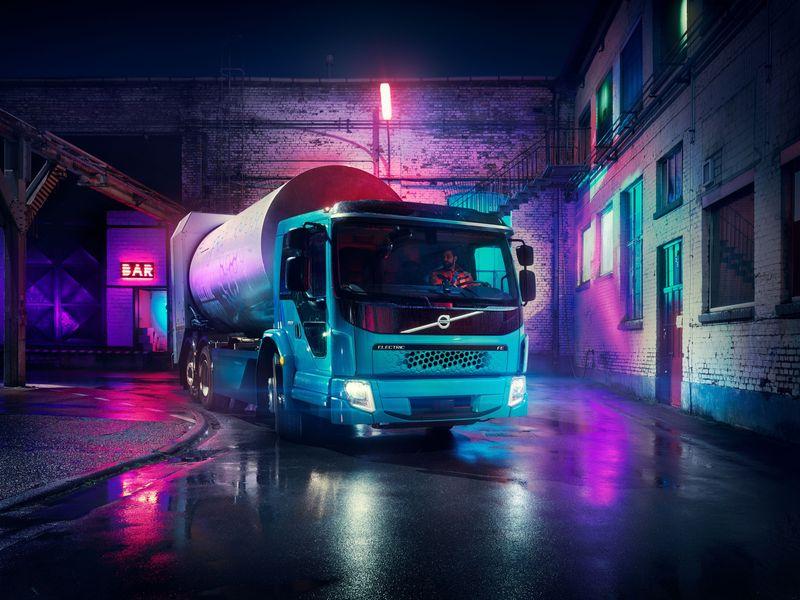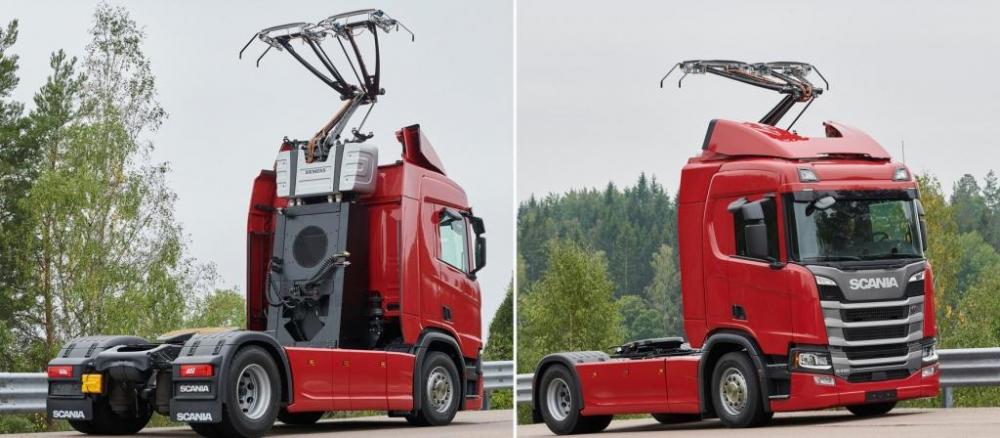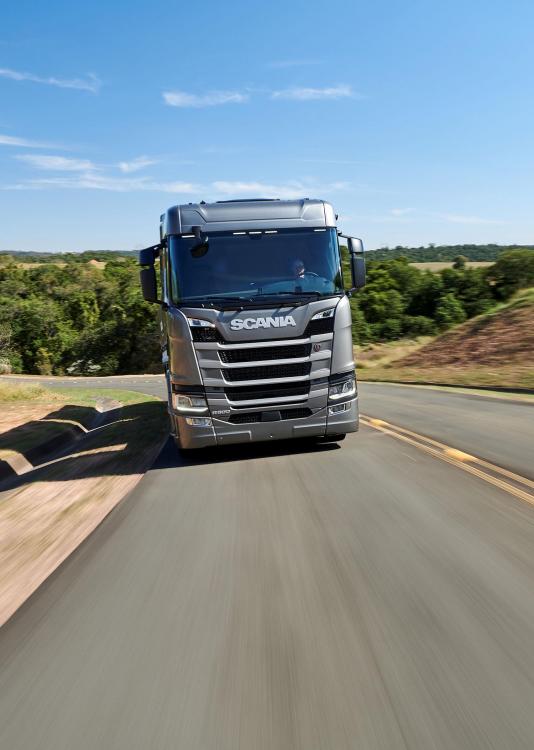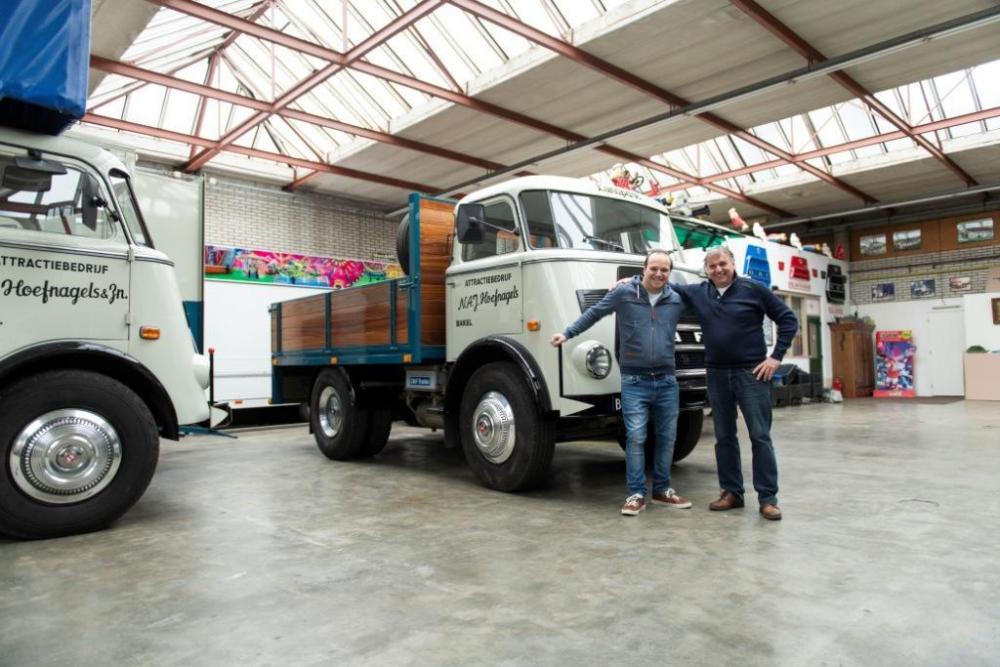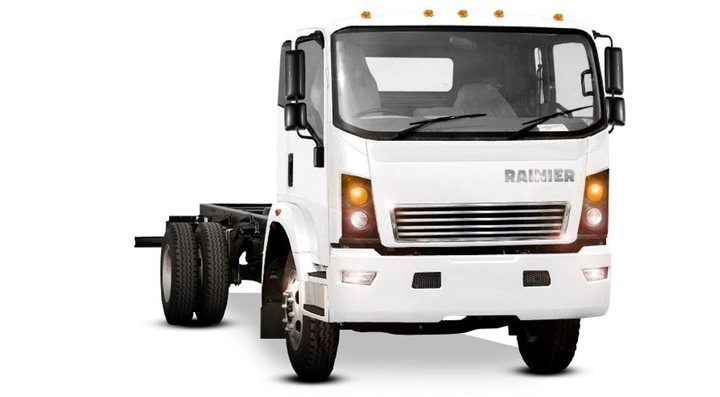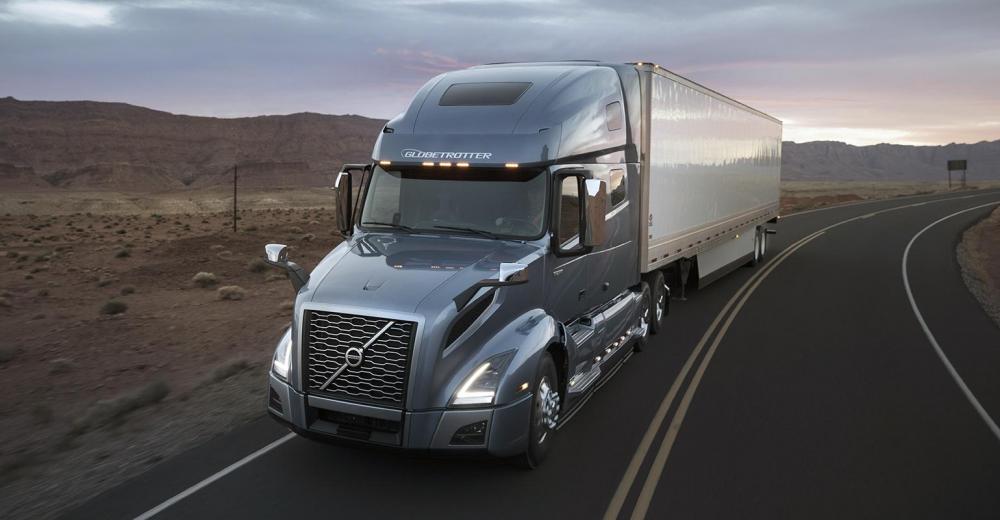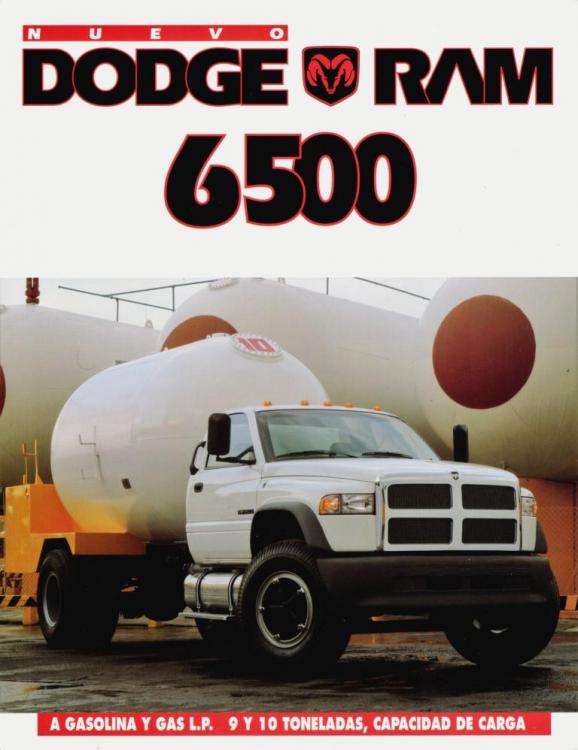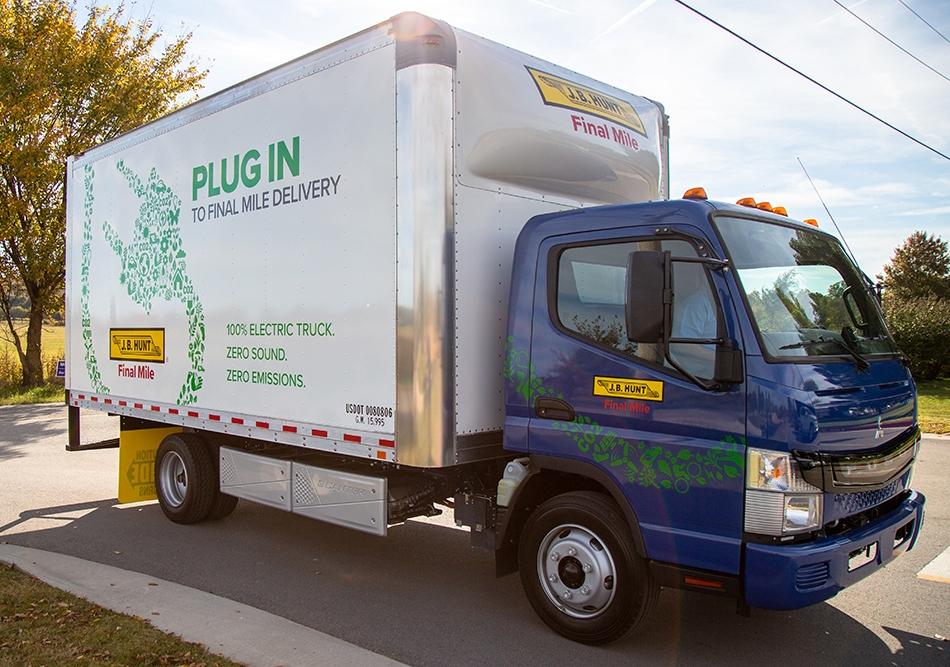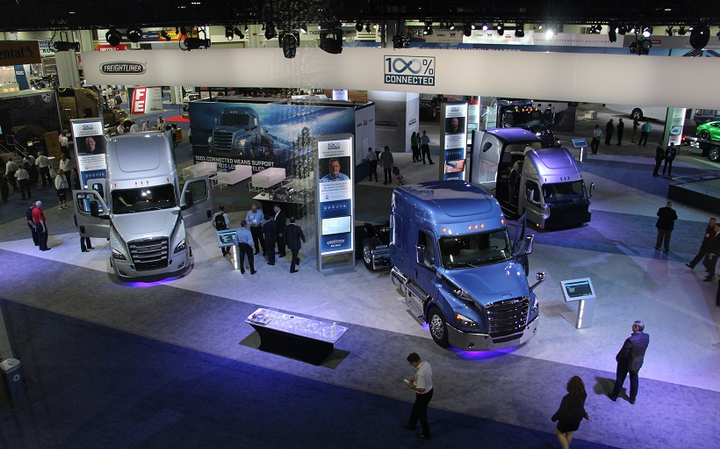
kscarbel2
Moderator-
Posts
18,896 -
Joined
-
Days Won
114
Content Type
Profiles
Forums
Gallery
Events
Blogs
BMT Wiki
Collections
Store
Everything posted by kscarbel2
-
Bloomberg / December 6, 2018 In a few months time, Swedish truck-making giant Volvo AB will deliver its first all-electric model. The battery-powered eight-wheeler will ply the streets of Germany’s northern port city of Hamburg, picking up garbage. While Chief Executive Officer Martin Lundstedt expects to go slow on the initial ramp-up, he sees the project as a harbinger for a rapid proliferation of battery-powered trucks to move goods and refuse around urban settings. The race is on with big truck manufacturers including Daimler and Scania, as well as upstarts like Tesla and Chinese companies, to develop electric workhorses. Success in Hamburg would put Volvo on firmer footing in an emerging market that is proving so difficult to gauge that it has even sparked jibes between executives. “What we see now is the beginning of a shift that will accelerate rather rapidly,” Lundstedt said in an interview at the Gothenburg headquarters of the world’s second largest truckmaker outside China. Getting the technology right for electric passenger cars is already a challenge, but harder still is designing vehicles that can carry far heavier loads for long distances and without costly downtime for charging. In an initial push, Volvo is focusing on moving relatively lighter loads around cities. The Swedish company earlier this year launched two models, and Lundstedt predicts “far more” than a quarter of trucks sold for city use are likely to run on electricity within five years. This is because the costs of operating battery-powered vehicles for tasks like package delivery are set to drop rapidly, becoming the cheapest option by 2025, according to Bloomberg New Energy Finance. The forecast shift to electric in the trucking industry is ushering in new competitors. Tesla is testing a heavy-duty truck with a 500-mile range and has said it will start deliveries next year. Those ambitious plans have been met with skepticism in the industry. Daimler’s head of trucks, Martin Daum, has said that current batteries won’t be able to deliver the range and load capacity needed. Tesla CEO Elon Musk answered with a good-natured retort on a May 2 conference call. “He doesn’t know much about physics. I know him,” Musk said then. “I’d be happy to engage in a physics discussion with him. I actually studied physics in college.” Lundstedt is more cautious, saying that while established truckmakers have knowledge and experience that is sometimes underestimated, he doesn’t want to risk looking foolish by deriding plans by Tesla or other newcomers. “I think it’s dangerous to dismiss that,” he said. “You could easily end up in a long line of people who have missed the train after dismissing things as unrealistic.” Volvo’s FE Electric truck destined for Hamburg can haul loads of 10 to 15 tons, slightly less than the comparable diesel version. When fitted with a 300-kWh battery, it has a range of 200 kilometers. It faces competition from Daimler’s Fuso brand, which has delivered up to 3.5-ton capacity electric eCanter trucks to customers in six cities. China’s BYD Co. has announced deals to deliver hundreds of garbage trucks at home and in Brazil. Longer-haul electric trucks would be best-suited for heavily-plied routes such as the U.S. eastern coast, the Volvo CEO said. Combustion engines would still be needed for most transport across longer distances, where charging systems would be more costly to develop. “If we want to reduce CO2, you should go for the applications where it makes the biggest difference, and where we have good technologies today,” he said. “That is to a large extent in urban environments.” .
-
Scania Group Press Release / December 6, 2018 Scania is to supply vehicles for the three Germany e-highway in trials that are expected to start next year. The decision was taken on behalf of the German Federal Ministry for Environment, Nature Conservation and Nuclear Safety (BMU), following a public tender process. Trials will initially commence in Hessen along the A5 Autobahn, where the five-kilometre e-highway infrastructure with electric power supplied from overhead lines in both directions has been completed. Next will be an e-highway segment on the A1 Autobahn to the Port of Lübeck, with additional stationary charging capacity planned at the port. This highway section is expected to open during summer 2019. Finally, the third e-highway is expected be established in Baden-Württemberg along a section of the B462 federal road early 2020. The 15 trucks will be equipped with pantograph power collectors, developed by Siemens, mounted on the frame behind the cab for charging while in motion. These trucks will be operated by haulage companies in actual transport operations. Delivery of the first hybrid R 450 truck by Scania for Hessen is scheduled for May 2019. In addition to delivering trucks, Scania will manage vehicle maintenance and data collection from the trials. Scania has previously been selected as partner in the concurrent research project conducted by Volkswagen Group Research. A hybrid Scania R 450 is expected to be delivered to the project in February and commissioning is ongoing on Siemens test track outside Berlin. A second electrified research vehicle will be delivered in autumn 2019. The research programme will seek to analyse and optimise the powertrain concept, energy management, hybrid transmission, battery ageing and the next-generation cooling system. “Unlike passenger cars, which remain parked and stationary most of the day, trucks are deployed for long hours in transport assignments when stopping to charge can be highly disruptive in the operations. E-highways offer rational and effective charging en route. The solution also saves batteries and reduces load on the energy network,” says Magnus Höglund, Head of Electric Road System, Scania. According to several studies e-highways are an alternative that will significantly help to reduce CO2-emissions. Electrified road technology is one part of Scania’s sustainable transport solutions, which is now also being tested on German roads. .
-
Barra says GM has made tremendous investment. In Mexico for sure....... . .
-
Educate me about RD bumpers
kscarbel2 replied to 6368's topic in Antique and Classic Mack Trucks General Discussion
Your 1987 RD, for example, was available with ten bumper options: Flush-mounted painted steel corporate bumper (24QL4284P5) Flush-mounted chrome steel corporate bumper (24QL3446P6) Flush-mounted aluminum corporate bumper Flush-mounted stainless steel clad aluminum corporate bumper Extended-mounting painted steel corporate bumper Extended-mounting chrome steel corporate bumper Extended-mounting stainless steel clad aluminum corporate bumper Extended-mounting swept back channel type painted steel with center tow pin Extended-mounting swept back channel type chrome steel with center tow pin Transporter bumper (temporary shipping bumper) -
Scania Group Press Release / December 4, 2018 Immediately following the recent Latin American launch of Scania’s new generation trucks, the Amaggi Group has ordered 300 Scania R 500 units. This is Scania Brasil’s largest single end customer order ever. The Amaggi Group is among the largest Brazilian agribusiness companies and the world’s largest soya bean producer. “In purchasing these vehicles, we can meet Amaggi’s logistics needs and we already have a long history of operating our own fleet,” says Executive President Judiney Carvalho, Amaggi Group. The 25-metre tractor and trailer combinations will each load 49.5 tonnes of produce. They will be integrated into Amaggi’s extensive logistics system, which combines road, rail and waterway transport. The trucks will be deployed on seven major intermodal transport routes. All vehicles will be covered by Scania Maintenance with Flexible Plans. By continuous monitoring of connected vehicles, this service provides adapted maintenance and thereby increases vehicle uptime. .
-
DAF Trucks Press Release / December 3, 2018 "Our truck may be 50 years old, but it is still a long way off retirement". Following an international search, DAF has found the oldest DAF truck still in commercial use — and it is in operation almost every day. The truck in question is an astonishingly sprightly A1600 owned by Frits and Nicky Hoefnagels, who use it to transport a nostalgia-filled fairground attraction all over the Netherlands. "Yes, of course we use it just like any other truck,” said Frits, “What else is a DAF truck for?" DAF announced its search for the oldest truck earlier this year, as the company continues to celebrate its 90th birthday in 2018. The search was launched with a video on social media that features a cattle trader who has been operating his DAF truck across Ireland since the early 1980s. The video has been viewed almost half a million times, prompting an avalanche of contenders for the title. Responses poured in from all over the world, but the oldest truck was found virtually in the back garden of the DAF factory in Eindhoven, in the village of Bakel. DAF was inundated with reports of vehicles that had been in use since the late 1950s and early 1960s. But not all of these great trucks met the criteria; the winner had to be a truck that is still in regular use for commercial transport on public roads. The proud owner of the oldest DAF truck is the family-run Dutch fairground business Hoefnagels, which uses the truck to transport its attraction all over the Netherlands. The photo that was submitted to DAF via Facebook by father and son Frits and Nicky Hoefnagels, showcases no fewer than four classic DAF trucks, all in top condition thanks to the constant care and attention they are given. Frits Hoefnagels explains: "Our attraction is a cake walk. We use our DAF trucks to transport our ‘Lunapark’ attraction, and the trucks were new when we added them to our fleet. The Lunapark goes into storage over the winter, but other than that we are on the move from early spring until late autumn, taking this huge building set from fairground to fairground." "In addition to a 2800 from 1975 and a 1600 from 1971, we have two A1600s. One of our DAF ‘kikkers’—so called due to their ‘frog-like’ appearance—is from 1968, and the other from 1969. And we don't take it easy on them", laughs Hoefnagels. "We are delighted to own and drive the oldest DAF still in commercial use: a A1600 from 1968!" . .
-
A platform designed by a mobile home chassis engineer with a Chinese Communist Party-built cab.......what could go wrong?
-
Rainier's Pilot Truck Plant Now Operational Heavy Duty Trucking (HDT) / December 6, 2018 After four months of renovation work, Rainier Truck & Chassis, LLC, of Yakima, Wash., has finally got its pilot production plant operational. Currently, the company is continuing to spec and secure components for production of its "low-cost/low-tech" common cab/chassis cabover engine platform. According to Gary Jones, president of Rainier, "The Pilot plant facility is 6,000 square feet located on 13 acres. The plant will be responsible for producing our first 200 trucks, which will be stall-built in six work stations. We will also have an assembly area for pre-assembly of axles/suspensions, engines and transmissions, fuel and air tanks, cooling and steering systems, etc." Additional expansion plans are in place for the future, according to the company. Rainier has added a 36,000-pound GVW Class “Baby” 8 COE truck model to its lineup called the RT 3600. The RT 3600 shares the same cab/chassis components with the rest of the Rainier lineup, except with higher gross axle weight ratings, and heavier-duty suspensions and steering components. In addition, the RT 3600 comes standard with the Cummins B6.7L 325hp with 750 ft.-lbs. of torque, which is mated to an Allison 3000RDS 6-speed automatic with push button shift selector. With the addition of the Baby 8 model, Rainier can now offer its dealers and customers a complete COE line up from Class 4 to 8. In the future, the company said it is looking to offer higher-horsepower engines and GVW’ ratings in the COE category. .
-
Aaron Marsh, Fleet Owner / December 6, 2018 New Volvo Trucks options packages for regional-, long-haul models give customers a base of features to build from for their applications, helping streamline the ordering process. Spec'ing a heavy truck is a bit like itemizing deductions and filing taxes—it's a different world than buying a passenger car. Heavy trucks have myriad choices for the build, including add-on options and equipment, but Volvo Trucks North America (VTNA) is looking to help streamline things particularly as technology keeps changing and adding to the complexity. The OEM has launched options packages to help make sure buyers aren't missing potential advantages for trucks based on the particular fleet application. For instance, VTNA yesterday announced a new weight-saving options group called Payload Plus available for its VNR regional-haul and VNL long-haul trucks, following up on the Xceed fuel-efficiency package for VNL 760 and 860 trucks showcased in late October. With practically endless ways to spec a truck, fleets often may arrive at a formula over time for what works and stick with it—even if that formula is no longer optimal. "We're really trying to dissuade customers from just spec'ing based on tradition," noted VTNA spokesman Brandon Borgna. VTNA's new options packages "simplify the spec'ing process and bring all the best features together so that things aren't overlooked," he said. The Payload Plus packages, which can be ordered now, shave off up to 540 lbs. from Volvo VNR regional-haul models and more than 335 lbs. from Volvo VNL long-haul models. They help maximize payload and fuel efficiency in applications like tanker, bulk-haul, and some dry van and refrigerated trucks. Lightweight components with Payload Plus include aluminum wheels, special chassis components, and horizontal exhaust. Depending on the application, weight can be further reduced by specifying optimized wheelbases and frame rail thicknesses. The results can be dramatic: "We hear from some fleets, particularly in bulk applications, that every pound of additional payload can equate to an additional $10 or more per job, so the Payload Plus packages represent a tremendous business opportunity," said Chris Stadler, product marketing manager at VTNA. Bulk haul and tanker trucks typically hit max weight before their trailers are full, he noted, "so reducing weight from the trailer and tractor can translate into greater payload capacity." The Xceed package for VNL 760 and 860 trucks includes Payload Plus along with powertrain combinations, engine options, and a docket of aero features. Spec'ing Xceed can give a VNL 760/860 up to an 11% fuel economy boost, according to VTNA. Another factor here for fleets is if you're going from one manufacturer to another, truck spec'ing isn't apples to apples. "If you were to compare optimal trailer gap for fuel efficiency with a Volvo, it's going to be different than a comparable model from another OEM," Borgna pointed out. The additional, finer details are up to the particular fleet and its needs, and ultimately a grain hauler may want different truck specs than a fuel hauler, for instance. VTNA's Xceed and Payload Plus packages are meant to give buyers a base to work from. "Everything is really application-specific, but this gives people a good opportunity to start from something as opposed to just looking at an order sheet and going, 'Wow,'" Borgna said. .
-
GM moves to challenge Ford in U.S. commercial fleet sales
kscarbel2 replied to kscarbel2's topic in Trucking News
Dodge Truck (Ram) dealers are begging for a 6500. And it would be such as easy step up (one recalls all the second generation "BR" 6500s sold in Mexico). . . -
"tested and validated in partnership with Allison Transmission" So deep that boots are required Bob.
-
Volvo Trucks North America (VTNA) / December 5, 2018 Every element that goes into a Volvo truck is designed to keep a truck that needs to be serviced in the shop for as little time as possible. From the new LED forward headlamps that last up to 10,000 hours to the removable three-piece bumper that allows for greater engine accessibility, Volvo trucks are built to maximize uptime. .
-
Parker Perry, Springfield News-Sun / December 5, 2018 Navistar and the local labor union are continuing to negotiate a contract even though a deadline set for this week has passed. A statement on Navistar’s website dedicated to providing information on labor contracts said the company offered a six-year contract to the UAW but it was voted down. “The ratification vote took place on December 2, 2018, and the membership voted to reject the terms of the proposed agreement,” the statement says. “We are disappointed in this decision and do not believe it is in the best interest for any of the involved parties. By its terms, the company’s proposal expires if it is not ratified and accepted by the union membership by December 10, 2018. Navistar continues to be committed to working with the UAW on solutions, and to reaching an agreement that helps all employees work as a team to competitively build our vehicles, run our plants and win in the market.” According to UAW Local 402’s website, the union voted down the contract with 98 percent of the vote. Chris Blizard, president of the UAW Local 402, said the union is continuing to work hard to make sure the best deal can be reached. “The UAW international unions along with input from the UAW policy counsel leadership are actively working on the outstanding issues with Navistar leadership,” Blizard said. “We are committed to obtaining a fair and equitable labor contract for our membership.” Blizard declined further comment. A letter dated Monday and posted on the Local 402 website by Secretary-Treasurer and Director UAW Heavy Truck Department Ray Curry provided a Tuesday deadline. “This is to inform you that we are still on a contract extension,” the letter says. “Despite our best efforts, we have been unable to reach an agreement. The recent vote on the Company’s final offer has been rejected by the collective Master Agreement locations. The Extension Agreement will expire on December 4, 2018 at 12:00 noon central time.” The company is a significant employer locally, with about 1,800 workers in the facility. Thousands of the company’s retirees also live in the area. The News-Sun reported earlier this year the industry is seeing near-record demand for heavy trucks, boosting revenue both for manufacturers like Navistar and their suppliers. Rising freight rates mean trucking firms are likely seeing solid profits, boosting confidence and encouraging fleets to replace their aging trucks. Last month, Navistar has launched a new medium-duty truck built in Springfield that is designed to be used in a variety of industries. The new Class 4, 5 and 6 chassis cab trucks are aimed at fleet and commercial customers, according to information from the company. .
-
.
-
Cummins Press Release / December 5, 2018
-
Daimler launches Mitsubishi Fuso eCanter in US market
kscarbel2 replied to kscarbel2's topic in Trucking News
J.B. Hunt Transport Services Takes Delivery of First All-Electric Trucks Transport Topics / December 5, 2018 J.B. Hunt Transport Services has made its first purchase of electric-powered trucks, acquiring five medium-duty eCanter box trucks from Mitsubishi Fuso Truck and Bus Corp. for use in making deliveries in Santa Fe Springs, Calif., and in the greater Houston area in Texas. The purchase was announced in an ceremony at J.B. Hunt headquarters in Lowell, Ark., on Dec. 5. “These trucks may be silent, but they speak loudly of our dedication to creating a more sustainable transportation system,” J.B. Hunt CEO John Roberts said in a statement. “Our efforts to reduce our carbon footprint and improve efficiency stretch across the supply chain, from intermodal load conversion to enhancing the aerodynamics and safety of our fleet. This latest addition brings that effort to the last mile and directly to the consumer’s doorstep.” J.B. Hunt is the second national carrier to introduce the eCanter trucks in the United States since the vehicle was launched in New York City in October 2017, according to Mitsubishi Fuso officials. Justin Palmer, president and CEO of Mitsubishi Fuso Truck of America, which is based in Logan Township, N.J., said the sale to J.B. Hunt represents an industry milestone. “The eCanter demonstrates that the future of electric trucks is very possible and is no longer a prototype, but a real truck delivering real goods daily,” he stated. The first fleets to take delivery of the eCanter were Japanese grocery retailer 7-Eleven and Yamato Transport. U.S. customers include parcel carrier UPS Inc., the University of California and the New York Botanical Garden. The trucks, which are produced at plants in Kawasaki, Japan, and Tramagal, Portugal, are powered by six high-voltage lithium-ion batteries with a driving range of 80 miles on a full charge and a maximum payload of about 9,380 pounds. The electric trucks will be added to the Final Mile Services division of J.B. Hunt Dedicated Contract Services unit. J.B. Hunt DCS ranks No. 1 on the Transport Topics list of largest dedicated contract carriers in North America with 8,727 power units. Overall, J.B. Hunt operates a fleet of more than 15,600 tractors and 734 straight trucks, according to registration data on file with the U.S. Department of Transportation. -
2020 Silverado HD Equipped with Allison Transmission Heavy Duty Trucking (HDT) / December 5, 2018 Chevrolet will offer a 10-speed, fully automatic Allison transmission in its 2020 Silverado 2500/3500 HD trucks. The 2020 Silverado HD will debut in February. “We built the new 2020 Silverado HD with more differentiation than ever before, to meet the needs and priorities of our customers,” said Jaclyn McQuaid, chief engineer, Silverado HD. “By offering the new Allison 10-speed, tested and validated in partnership with Allison Transmission, each transmission will deliver the legendary quality and durability that customers have come to expect. The Allison-branded automatic transmission, manufactured by General Motors, combines enhanced performance and fuel economy, greater operational flexibility, and improved driver comfort and control, with an industry-leading reputation for uptime and reliability, according to the companies. The Allison 10-speed transmission will be coupled with Chevrolet's Duramax diesel engine. "We are pleased that General Motors continues to expand the range of Allison products available for their customers with the 2020 Silverado HD," said Randy Kirk, senior vice president of product engineering and program management for Allison Transmission. "Allison Transmission and GM have a long history of collaboration and innovation." Recently, Allison began producing the 6-speed fully automatic transmission for Chevrolet’s Silverado 4500 HD, 5500 HD, and 6500 HD medium-duty trucks.
-
Heavy Duty Trucking (HDT) / December 4, 2018 Reyco Granning has announced the launch of the Reyco Granning Electric Vehicle Solutions business unit, aimed at serving the burgeoning electric vehicle market. The unit aims to solidify the company’s commitment to the future of heavy duty vehicle propulsion and emphasize current solutions for today’s electric vehicle market. “We want the industry to know that we already have solutions that are compatible with e-axles and available today for the heavy EV space,” said John Stuart, Reyco Granning president. “We’re not just peddling CAD renderings and concepts.” The company recently launched a new air suspension supply and control module called AirMaster. The product utilizes an electronic air compressor and proprietary programming to dramatically reduce parasitic power consumption suitable for the EV market or for any vehicle without an engine-mounted compressor. “We don’t have an automotive division to distract us; we don’t sell bumpers or fifth-wheel couplings. We are a pure suspension technology company.” said Scott Ames, business development. Reyco Granning’s IFS product range includes applications for GAWR's from 9,000 to 24,000 pounds and in mid-2019 the company will launch the ComfortMaster IFS with a Nitrogen-strut architecture.
-
Heavy Duty Trucking (HDT) / December 4, 2018 Launching in 2017, the second North American Commercial Vehicle Show promises to include all major Class 8 truck manufacturers for the 2019 show, including Peterbilt and Kenworth for the first time. Freightliner, Western Star, Volvo Trucks, Mack Trucks, Navistar, and Hino all will return, again displaying and launching new products on the NACV show floor. The second NACV show is set for Oct. 28-31, 2019 at the Georgia World Congress Center in Atlanta, Ga. The upcoming show is growing and will cover 530,000 square feet of exhibition space, up from 370,000 square feet, and is expanding into a second building. Organizers expect to host more than 500 exhibitors, up from 439 in 2017. Over 15,000 fleet management attendees are expected to visit the show in 2019, more than double the number of attendees at the inaugural event. In addition to truck makers, NACV will also host leading trailer manufacturers and top tier suppliers, including Bendix, BorgWarner, Bosch, ConMet, Continental, Cooper Tire, Cummins Inc., Dana, Dorsey Trailer, Great Dane, Hendrickson, Holland, Hyundai Translead, Meritor, SAF Holland, Tenneco, Thermo King, Utility Trailer Manufacturing, Wabash, and Wabco. The show will offer exclusive looks at the latest model power units and trailers, advanced driver assistance systems, fuel efficiency equipment, safety technologies and electronic logging devices. For 2019, it will also include a broader array of maintenance services, high-quality truck accessories, and driver retention and recruiting services. “Since its 2017 launch in Atlanta, the NACV Show continues to impress the industry with its cutting-edge demonstrations of commercial vehicle innovations and technologies,” said Larry Turner, president and CEO of Hannover Fairs USA, NACV’s co-organizer with partner Newcom Media. “We are excited to expand the event’s footprint and offerings next year, and to continue to focus on the needs of a larger audience of fleet owners, fleet managers, fleet maintenance managers and other key decision makers from across North America.” .
-
Heavy Duty Trucking (HDT) / December 3, 2018 As Class 8 truck production is booming in 2018, the numbers show a trend toward smaller-displacement engines and more straight trucks. Medium-duty has seen a similar trend. Overall Class 8 truck production is expected to continue its growth trend into 2019, but changes in demand for straight trucks and tractors will affect the type of diesel engines being ordered. This trend is so strong that Class 8 trucks with 12.0L to 14.0L engines are expected to surpass the 14.0L category for the first time ever in 2019. While tractors still represent 73% of all Class 8 production in 2018, the straight truck segment is expected to grow to a 32% share in the future. There is a similar movement in the medium-duty Class 5 through Class 7 truck market, where gasoline engines are gaining adoption. In the Class 5 segment, V-8 and V-10 gasoline engines are increasing in popularity. In the larger Class 6 through Class 7 markets, six-cylinder diesel engines remain the preferred configuration. The report also predicts increased adoption of alternative-fuel vehicles, driven by tighter emissions regulations. “Diesel power is under attack long-term for use in on-highway commercial vehicles. Alternative power is being developed, tested, and refined, while diesel engines are also undergoing transition to become more fuel-efficient and clean,” said one analyst. “It is vital for industry participants to stay up-to-date on developments like the recent EPA update to the NOx emission standards for heavy-duty engines and funding awarded under the Diesel Emission Reduction Act.”
BigMackTrucks.com
BigMackTrucks.com is a support forum for antique, classic and modern Mack Trucks! The forum is owned and maintained by Watt's Truck Center, Inc. an independent, full service Mack dealer. The forums are not affiliated with Mack Trucks, Inc.
Our Vendors and Advertisers
Thank you for your support!


